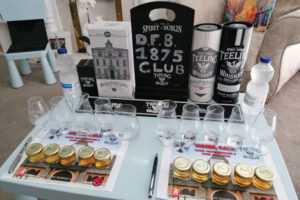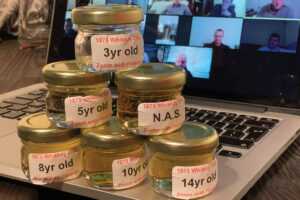The crew of C Watch Rathfarnham talk about a close-knit unit that extends into the community.
Under lockdown, it was unfortunately not possible to visit Rathfarnham Station, so this time around we tried something different and spoke via Zoom and phone with S/O Ken Whelan and the crew at No.8.
It is immediately evident that this is a group of colleagues who enjoy working with each other, and are more than happy to be based at this one pump station where an atmosphere of positive encouragement pervades, enabling each member to hone their skills and pursue further development.
“I’m very proud to be S/O on C Watch since 2016,” says Ken, who is now in his 27th year with DFB. “We operate a very positive environment with an emphasis on mentoring the crew through myself and the senior firefighters, ensuring a high level of operational readiness.
“They are a very committed, tight-knit group who have a very professional attitude to their work and serving the end user: the public. We really enjoy the unique challenges we face on a regular basis,” S/O Whelan tells me, “you get great job satisfaction from the knowledge that you have given 100%, and all of the crew do that every day.”

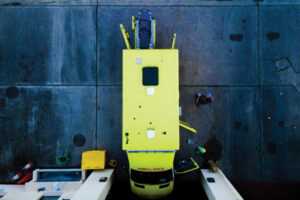
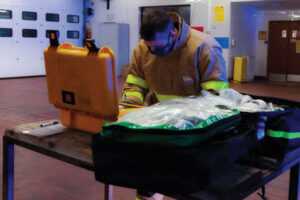
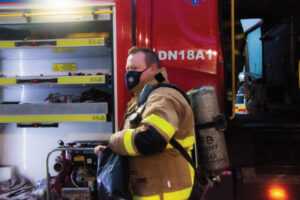
CREW
Despite several members being in the job just a few years, the ten FF/Ps on C Watch have a broad range of experience, from senior FF/Ps Brian Tracey and Philip Evans, who have been here for almost 20 years, down to the latest recruit, Anthony O’Meara, who joined in November 2020.
As part of Alpha District, they cover a wide area and can expect to be called out to anything from industrial and domestic fires to RTCs, with several large shopping centres, industrial estates, apartment complexes, suburban areas and the M50 close by.
“As a one pump station, every incident we attend, you are first on the scene,” S/O Whelan tells me, “so it’s terrific experience to work here. You do 50/50 between fire engine and ambulance, so it’s a great place to learn, a springboard to become experienced and bring that forward in your career.”
The station’s proximity to the Dublin and Wicklow Mountains mean they are also called on to tackle wildfires. “Wildfire training is of particular interest to us because of our proximity to the areas affected on the southside,” S/O Whelan says. “We have new equipment available to us to respond to wildfires, such as drones. It’s an area of firefighting we are excited to be a part of.”
As each member of the crew joins the Zoom call, their camaraderie is evident, with the usual banter and jokes showing that they genuinely get along.
“The whole dynamic is very good,” S/O Whelan agrees. “At any one time we have myself and seven other firefighters on duty, so we depend on one another, and that is why a positive culture is of vital importance. They get to start on the right foot in terms of attitude and confidence and that sets them up for their career.
“Of course, when the bells go off and we go out, we are always operationally ready, and when we get on the scene, we can apply our training and use our teamwork and camaraderie to do our job, which is to serve the public effectively. Teamwork makes the dream work, as they say.”
As much as he enjoys his time at C Watch Rathfarnham, S/O Whelan will soon be leaving to take up a post as D/O. “I’ll be delighted to see the back of them!” he jokes. “No, I am very proud to have been S/O for this crew. It was my first station as an S/O and I feel privileged that I was given a permanent station. I have enjoyed every bit of it. You learn from every incident you go to if you go in with the correct attitude and application, and you can build on that as an individual, as a firefighter, as an officer and as a team.”
As well as those who joined the Zoom call, S/O Whelan also asked that I contact the crew members not on duty that day. “I was keen for all of them to give their input, just as they do every day on the job,” he says.
Senior man FF/AP Brian Tracey also tells me about the mix of experience within the crew.
EXPERIENCE
“Myself and Phil are the old heads here,” he says, “but I don’t feel like a senior man because I still feel excited about coming into work, looking forward to every day.” He adds: “I have never worked with a crew that is so on the ball, who know each other’s strong points so well.”
FF/AP Tracey agrees with S/O Whelan that a one pump station is a great place to learn your trade. “I think everybody should have to serve in a one-pump station at some stage,” he says. “You are involved in every aspect of what is going on. Also, I think everyone who comes into C Watch here feels like part of a family and that is all you can ask for in a job.”
As the other senior member of the crew, FF/P Philip Evans has moved across several stations, but is happy to now be settled at No.8. “When I got to Rathfarnham I said, you know what, this isn’t a bad spot to stay,” he says.
Other members of the crew are also quick to point to the very positive atmosphere at No.8, as well as the benefits of working at a one pump station.
“You get great experience on a day-to-day basis,” FF/P John McGrane, who has been at Rathfarnham for just over a year, tells me. “I love the togetherness of a smaller station. I have to say this is one of the best crews I could imagine in terms of positive experiences.”
FF/P David Reilly is also relatively new to C Watch here, having joined in 2016 but moved from Tallaght just before the first lockdown and says: “I was just getting adjusted to the crew when the pandemic started, but I love it. The crew is very close-knit.”
FF Gary Halpin, cousin of the late Ian “Frodo” McCormack, is also in his first years here, having joined C Watch at the end of 2018, and he too praises the experience of working at a one pump station.
“I’m enjoying it here,” he tells me. “In such a small crew there is nobody I haven’t been on the ambulance with, and you get to know people very well as a result. Nobody feels jaded because there is a very enthusiastic atmosphere. The best thing to say is that it doesn’t feel like work.”
FF/P Barry O’Reilly joined DFB in 2016, moving to No.8 six months later, and he too enjoys the experience.
“Having so much time on the ambulance is a major advantage in terms of experience and expertise,” he says. “I didn’t think I would be that interested in the ambulance side until I started, but it is something I love. You are calling the shots yourself.”
Newest member FF/P Anthony O’Meara, who joined in November 2020, also emphasises how easy it was to fit in.
“I was nervous at the start because you don’t know how you are going to fit in with such a tight-knit team, but straight away the lads made me feel at ease,” he tells me. “They were very accommodating and helped me through the first period, with a bit of slagging of course. I really feel like I have hit the ground running.”
FF/P Rob Mullervy, who has been with C Watch for seven years, agrees. “I know I have my S/O sitting beside me but I am honestly very happy here,” he tells me.
He is also keen to stress the positive atmosphere at the station. “You never dread coming into work here,” he says. “It is a very exciting job anyway, but the job is made so much easier when you have a great crew.”
FF/P Mark Ryan, who has been here since May of last year, joins the conversation: “There is great camaraderie. It’s a great station and Watch to be on because you get so much experience working on the ambulance as well. We are like a family here, but without any of the drama.”
FF/P Ian Nugent, who grew up around the corner from the station, joins the call. He is on mess duty, which leaves him open to a lot of slagging, as FF/P Ryan says the crew need to “leave their taste buds at the door”.
“You could be Gordon Ramsay and they still wouldn’t be happy,” he replies. “But seriously, I get on great with everyone. Morale is very good. There is a brilliant community spirit here, and we get a lot of messages from people we have helped, a lot of thank you cards and messages of support”.
COMMUNITY
The role of DFB within the community is something S/O Whelan stresses is very important. “Having worked across the watches and districts, I am taken aback by the well wishes we receive,” he says. “It is a huge morale boost to the crew to see their work is acknowledged.”
The major community work is done through the hugely successful annual Open Day that in recent years has seen thousands of people visit the station, and S/O Whelan is keen for me to talk to FF/Ps Tracey and Evans about this.
Every year since 2015 it has raised much-needed funds for local charities, amounting to more than )30,000 in total. It was the brainchild of senior members of the crew, after a local woman called Alison Behan, aka “Cake Boss”, asked if she could help raise money for the station through a coffee morning. Instead, the Open Day idea was formed, with the nearby Dublin and Wicklow Mountain Rescue team chosen as the first beneficiaries, and from there the event has grown.
“We pick smaller charities because they are operating on a shoestring budget, and we know the money is going directly to where it is needed,” FF/P Evans tells me.
FF/AP Tracey adds that the Open Day has really helped form a community spirit. “We pulled back the curtain on what we do, because the station has big gates and big doors, and you don’t get to see inside at what life is like, so we opened the doors and it really made a difference.”
He too recalls how the idea for the Open Day began. “We were worried it might be a tough PR exercise to run, so we planned to keep it low key so we wouldn’t embarrass ourselves,” he admits. As luck would have it, the job itself provided some valuable publicity ahead of the event.
“A week beforehand, we were finalising the details and we heard screaming coming from the forecourt,” FF/AP Tracey says. “When we ran down, we found a woman named Siobhan giving birth to her child in a Ford Mondeo. We helped deliver the baby, called Sky, and when we opened for the Open Day, Siobhan was the first person through the doors as our guest of honour.
“The following year, Sky was the guest of honour, and we unveiled her birth cert in the muster area, where it remains to this day, with her place of birth saying ‘Forecourt, Nutgrove Fire Station’.”
Despite it not going ahead this year, community interest is still very high, and FF/AP Tracey says the station is inundated with messages from community groups asking if they can visit when lockdown is over.
“Once it is viable, we will give them all the time we can because we know how important it is to keep close ties with the community,” he says. Those close ties are mirrored within the crew of C Watch Rathfarnham, and even though we spoke over Zoom and phone, their sense of camaraderie and commitment to serving their community is tangible. I look forward to one day being able to visit them in person.



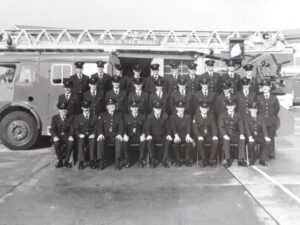

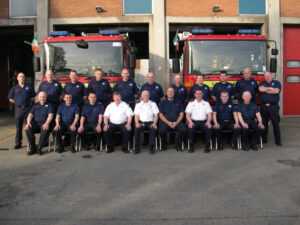

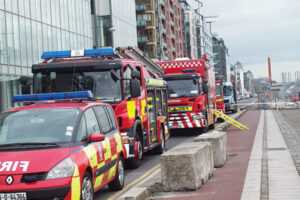
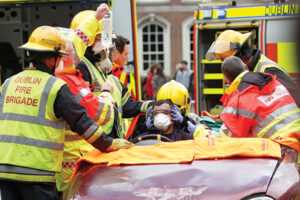
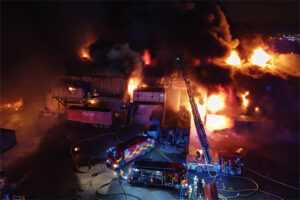


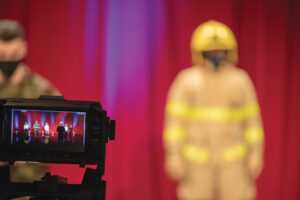
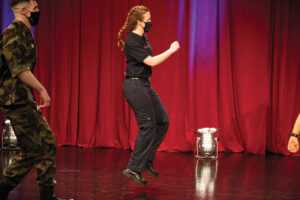
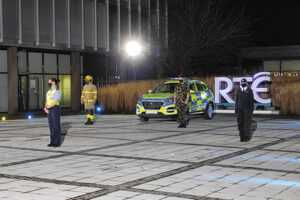

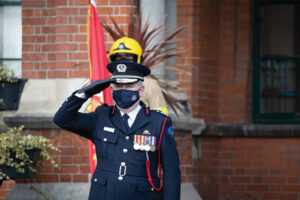
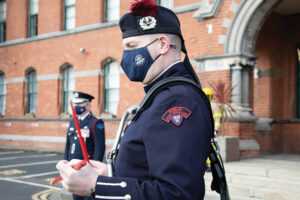
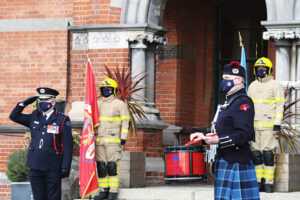
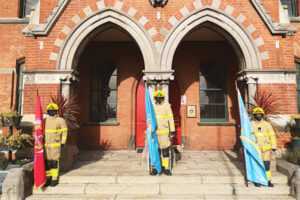
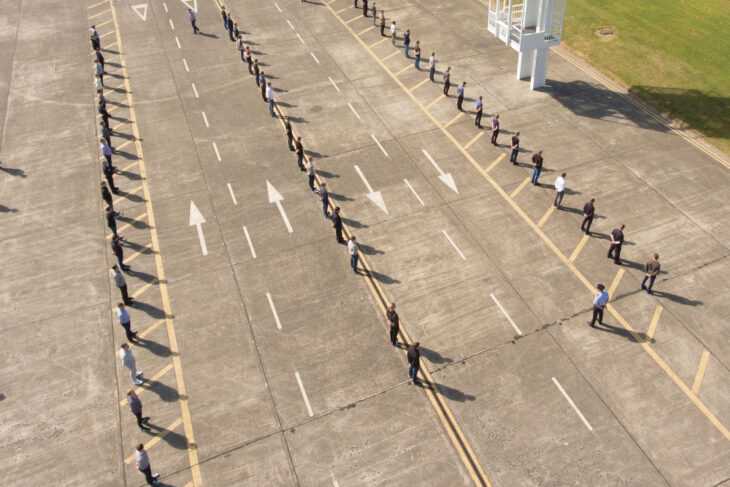
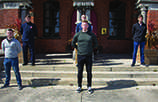

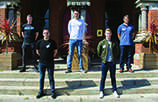
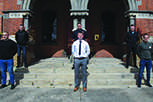


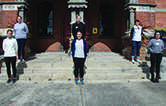
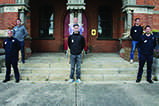
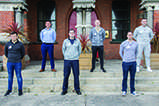


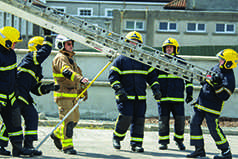

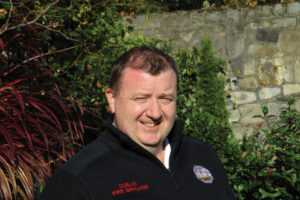 PROTOCOLS
PROTOCOLS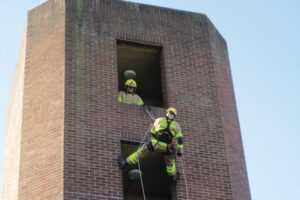
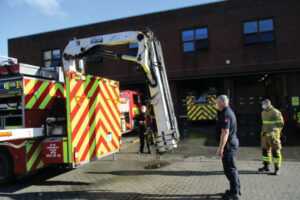

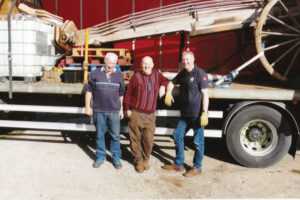
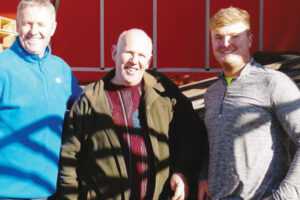
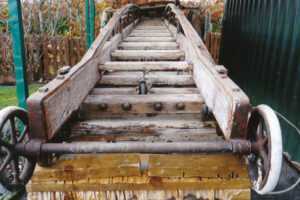
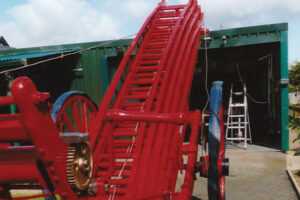

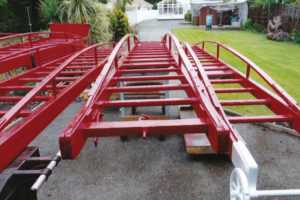
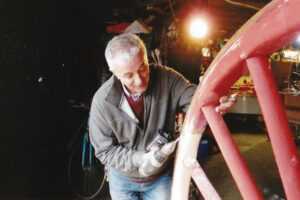
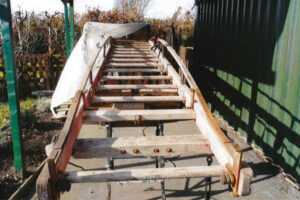
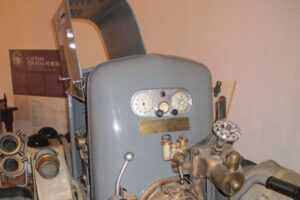
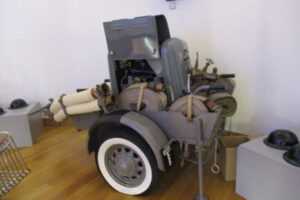
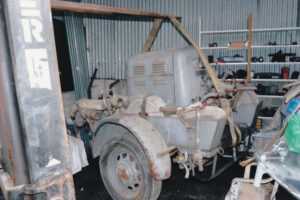


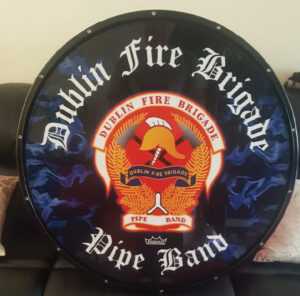
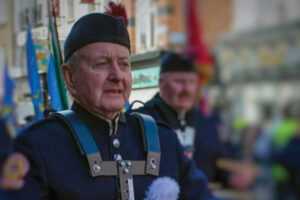 Paul turned 80 in the midst of lockdown. He is a founding member of the band and has been pushing us forward since that foundation in 1985. If there is one word that Paul and his tenor drum know the meaning of, that is dedication. Our motivational performance during the summer gave us as a band the opportunity to wish Paul a happy birthday and to say thank you for his years of commitment to DFBPB and all we stand for. Breithlá Shona dhuit Paul agus Míle Buíochas!
Paul turned 80 in the midst of lockdown. He is a founding member of the band and has been pushing us forward since that foundation in 1985. If there is one word that Paul and his tenor drum know the meaning of, that is dedication. Our motivational performance during the summer gave us as a band the opportunity to wish Paul a happy birthday and to say thank you for his years of commitment to DFBPB and all we stand for. Breithlá Shona dhuit Paul agus Míle Buíochas!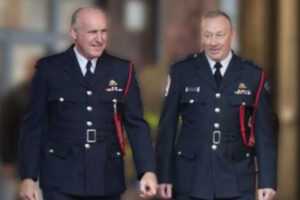 Speaking of retirements, the band’s current treasurer and former pipe major, Paul McNally, retired from service as S/O in No 4 District Station in September. Fortunately, we were in a position to play a small set as a tribute to Paul and his dedication to the band over the years at his off-going parade. We’re hoping the band will stand to benefit more from his increased free time. Go n-eírí leat Paul.
Speaking of retirements, the band’s current treasurer and former pipe major, Paul McNally, retired from service as S/O in No 4 District Station in September. Fortunately, we were in a position to play a small set as a tribute to Paul and his dedication to the band over the years at his off-going parade. We’re hoping the band will stand to benefit more from his increased free time. Go n-eírí leat Paul.
